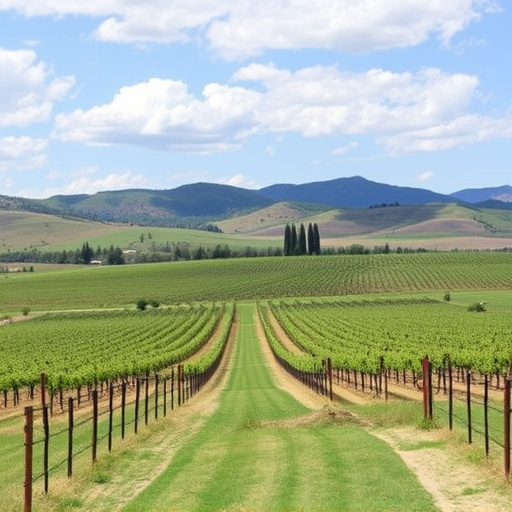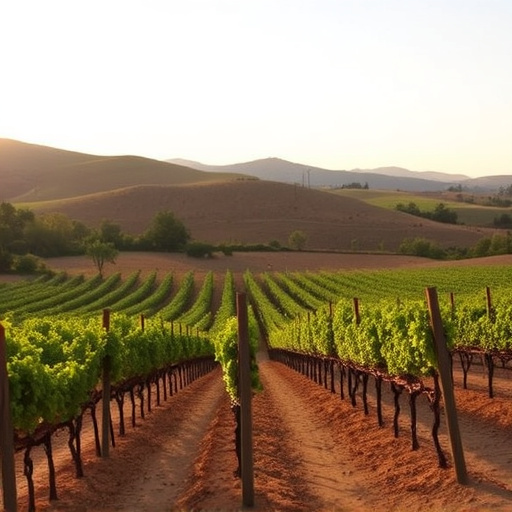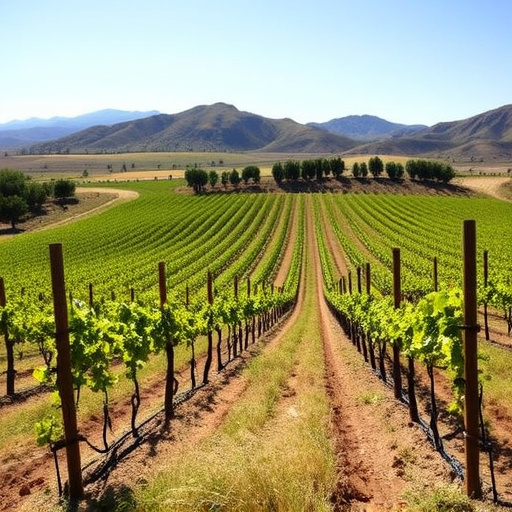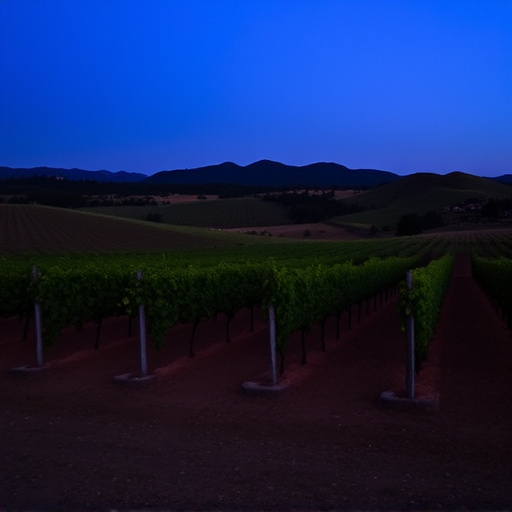The Sonoita region in Arizona's high country is known for its thriving vineyard scene, made possible by diverse microclimates shaped by elevation, topography, and natural features. These microclimates support a wide range of grape varieties, resulting in complex flavors and aromas that set its wines apart. With over 40 vineyards, each offering unique factors like soil types, wind patterns, and elevation, Sonoita provides a vast array of wine styles. Scientific analysis helps uncover the intricate link between microclimate and grape physiology, leading to distinct flavor profiles. Exploring these microclimates offers a captivating sensory journey, making Sonoita a premier wine-producing destination renowned for its distinctive and high-quality wines.
Explore the enchanting world of microclimate wines in the neighboring vineyards of Sonoita, Arizona. This region boasts a unique set of conditions that dramatically affect grape growth and wine characteristics. From understanding its microclimates and exploring the diverse wine production landscape to choosing the perfect vineyard and analyzing scientific influences on grapes, this article delves into the factors shaping Sonoita’s distinctive wine styles. Uncover the sensory delights and future prospects of these renowned sonoita vineyards.
- Understanding Microclimates: Unveiling the Unique Conditions of Sonoita Region
- The Wine Production Landscape of Sonoita: A Quick Overview
- Choosing the Right Vineyard: Factors to Consider in Sonoita
- Scientific Analysis: Comparing Microclimate Influences on Grapes
- Sensory Experience: Tasting Notes on Corresponding Wines from Neighboring Vineyards
- The Impact and Future Prospects for Sonoita's Distinctive Wine Styles
Understanding Microclimates: Unveiling the Unique Conditions of Sonoita Region
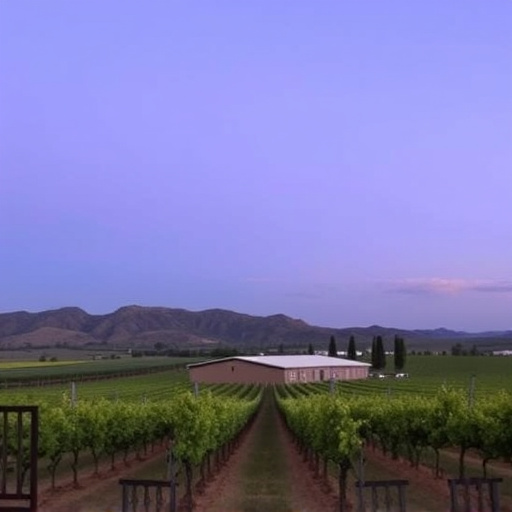
The Sonoita region, nestled in Arizona’s scenic high country, is renowned for its thriving vineyard scene. Understanding the microclimates that define each vineyard is key to appreciating the unique characteristics of wines produced here. Microclimates refer to the specific weather conditions and environmental factors that create distinct regions within a larger area, allowing for a wide variety of grape varieties and wine styles to flourish.
Sonoita’s vineyards enjoy a reputation for their diverse microclimates, influenced by elevation, topography, and surrounding natural features. Some areas benefit from warmer days and cooler nights, ideal for cultivating both robust red grapes like Syrah and delicate white varietals such as Riesling. This region’s unique terroir, or the combination of soil, climate, and geography, contributes to the complex flavors and aromas that make Sonoita wines so distinctive. Exploring these microclimates offers wine enthusiasts a chance to uncover the secrets behind the region’s vibrant and ever-evolving viticultural scene.
The Wine Production Landscape of Sonoita: A Quick Overview
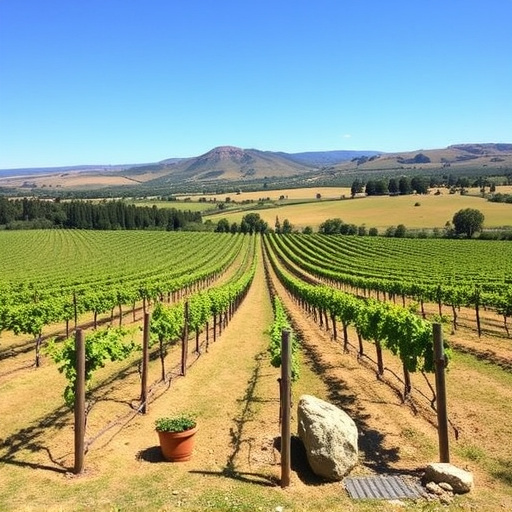
Sonoita, nestled in the heart of Arizona’s Sonoran Desert, has emerged as a vibrant and bustling hub for wine production. This region boasts a unique microclimate that fosters the growth of diverse grape varieties, contributing to its reputation as a game-changer in the world of vino. The vineyards here are not just pockets of lush greenery amidst the arid landscape but rather a testament to the adaptability and resilience of both nature and human ingenuity.
The wine production landscape of Sonoita is a symphony of contrasting elements. The region’s hot, dry summers and mild winters create ideal conditions for grapes to ripen slowly, allowing for complex flavors to develop. This slow maturation process sets Sonoita wines apart, giving them distinct characteristics that often differ from their neighboring counterparts in the more established wine-producing regions. With over 40 vineyards spanning the area, each with its own unique microclimate and terroir, Sonoita offers a diverse range of wines, from robust reds to crisp whites, all reflecting the region’s distinctive character.
Choosing the Right Vineyard: Factors to Consider in Sonoita
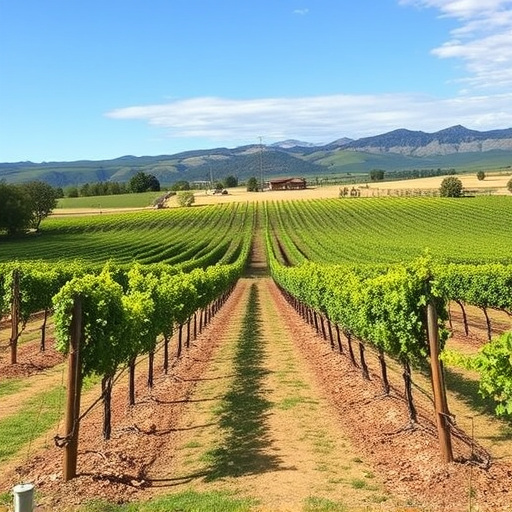
When visiting the Sonoita region for microclimate wine tastings, choosing the right vineyard involves considering several unique factors specific to this area. The diverse microclimates within Sonoita offer a range of temperature variations and sun exposure, significantly influencing grape cultivation and wine characteristics. For instance, vineyards nestled in higher elevations often enjoy cooler temperatures, ideal for cultivating Bordeaux-style grapes like Cabernet Sauvignon, while lower-lying areas benefit from warmer days and cooler nights, fostering the growth of vibrant Chardonnay and Pinot Noir varieties.
Additionally, the region’s diverse soil types play a crucial role. Some vineyards boast well-draining sandy soils, promoting vigorous plant growth but requiring careful irrigation management, while others enjoy richer, more fertile loam that supports deep root systems and contributes to complex flavor profiles in the resulting wines. Proximity to the Santa Rita Mountains also impacts wind patterns, providing natural protection for some vineyards but posing challenges for others in terms of wind-driven grape disease prevention. These varied factors ensure that each Sonoita vineyard offers a unique microclimate and terroir, contributing to the diverse and delightful wine offerings found throughout the region.
Scientific Analysis: Comparing Microclimate Influences on Grapes
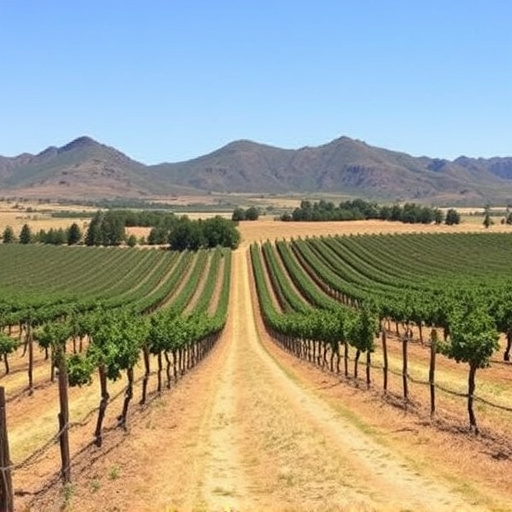
Scientific analysis plays a crucial role in understanding how microclimate influences grapes and, consequently, the unique characteristics of wines from Sonoita region vineyards. Researchers employ advanced techniques to study temperature variations, sunlight exposure, and humidity levels across different plots within nearby vineyards. By collecting data over extended periods, they can identify specific climate factors that contribute to the distinct flavors, aromas, and structures of the resulting wines.
These scientific insights enable wine enthusiasts and sommeliers to appreciate the intricate relationship between microclimate and grape quality. The subtle differences in growing conditions can significantly impact grape physiology, leading to variations in sugar content, acid levels, and tannin development—all essential elements that shape the final wine’s profile. By comparing these data-driven findings across neighboring vineyards, one can truly uncover the intricacies of Sonoita’s diverse microclimates and their enduring impact on the region’s renowned wines.
Sensory Experience: Tasting Notes on Corresponding Wines from Neighboring Vineyards
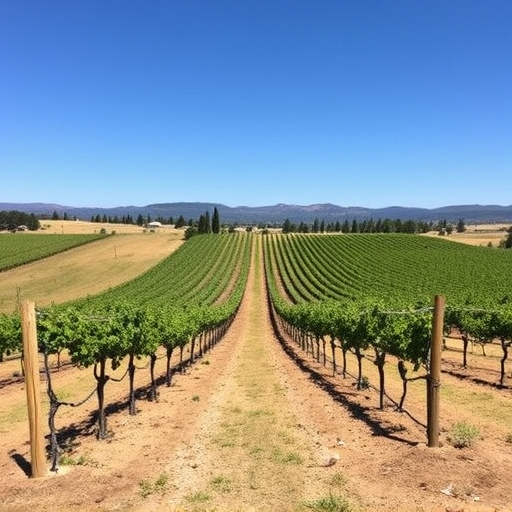
The sensory experience of microclimate wines from neighboring Sonoita region vineyards offers a fascinating insight into the impact of local conditions on grape cultivation and winemaking. When comparing corresponding wines from different farms, one might notice distinct characteristics that reflect their unique microclimates. For instance, a vine growing in a warmer, sunnier spot might produce a wine with richer, more intense fruit flavors, while cooler areas could offer crisp acidity and vibrant aromas.
Tasting notes may reveal contrasting profiles; a wine from a vineyard nestled against a mountain range might exhibit subtle mineral notes and a firm backbone, whereas a valley floor wine could present sweeter, riper fruits. The subtle nuances in terroir translate into an enriching experience for wine enthusiasts, allowing them to explore the diverse expressions of the Sonoita region’s microclimates through each sip.
The Impact and Future Prospects for Sonoita's Distinctive Wine Styles
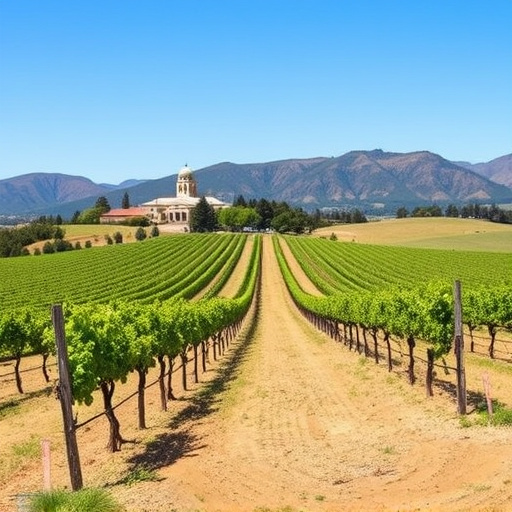
The distinctive microclimates of Sonoita region vineyards have fostered a unique and diverse range of wine styles, each with its own character. The cool mornings and warm afternoons create optimal conditions for grapes to ripen slowly, developing complex flavors and aromas. This slow ripening also contributes to higher acidity levels, making these wines particularly food-friendly. Additionally, the region’s relatively low yields ensure intense concentration in every bottle.
Looking ahead, the future prospects for Sonoita’s distinctive wine styles are promising. As climate change continues to shape global viticulture, the region’s microclimates may become even more favorable for certain grape varieties and wine styles. This could lead to further exploration and experimentation with different blends and techniques, solidifying Sonoita’s reputation as a premier wine-producing destination known for its unique and high-quality offerings.
The diverse microclimates of the Sonoita region have fostered a rich tapestry of wine styles, with neighboring vineyards showcasing unique characteristics. By understanding the specific conditions that shape these microclimates, winemakers can craft exceptional wines that reflect their terroirs. This study highlights the importance of location and its profound impact on grape growth and wine quality. As the Sonoita wine scene continues to evolve, preserving these distinctive microclimate-driven styles will be key to fostering the region’s reputation as a premier wine destination. Exploring and appreciating the subtle differences between neighboring vineyards offers an enchanting journey for wine enthusiasts, ensuring Sonoita remains a must-visit for those seeking exceptional vintages.
